Lessons and asides from forestry in Aquitaine
Hamish Levack, New Zealand Tree Grower May 2009.
If the poles were reversed, areas of Southern France would have the same latitude as parts of New Zealand. The maritime effect of the Atlantic and the Mediterranean adds to the similarities, and many tree species thrive equally well in both countries. However different histories and different ownership patterns have led to different responses to problems and opportunities.
Investigating this further was sufficient reason for a group of NZFFA members and followers to decide to make a study of forestry in the Aquitaine during October 2008. The group comprised four couples – Natalie and Malcolm Blair, Sheila and Geoff Cameron, Jenny and Jon Dey and Glenis and Hamish Levack. It was Jon and Jenny’s second trip, so they had already established some useful contacts.
The French embassy in Wellington was helpful. During April 2008 the French Ambassador Michel Legras and his wife Marlise even had us to dinner with a group of French forest owners from Limousin. Two other people deserve special mention for the assistance they provided. These are Jean Michel Carnus, who directs a forestry research establishment in Bordeaux, and his wife, Ann Evison, a NZ-trained forester.
Forestry at la Pouyade
In the 1700s, the Marquis de la Garde developed his estate at La Pouyade in the Dordogne on the edge of the Massive Central. He began to manage his natural oak forests on 100 year rotations to produce timber for wine barrels and to develop his chestnut coppice resource to better provide fodder and fencing material.
Much of this 1,260 hectare domaine is forested today, except it is now owned by a family company. Major shareholders are Roger, an expatriate New Zealander, and his French wife, Christine Belton. The Beltons invited us to spend a night in the château and a day looking over their forest.
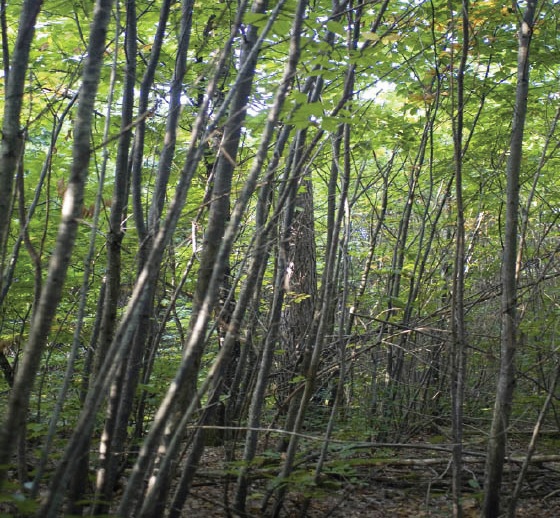
It is understandable that Roger should no longer be able to enjoy the right to do whatever the proprietor wants with his serfs and their families but it is less comprehensible that he is not allowed to control hunting in his own forest. The commune, that is the local authority, via an agency, la Fédération des chasseurs, has managed the hunting since the French revolution.
Mammoths and bison
Mammoths and bison stopped roaming la Pouyade several thousand years ago, but there are still plenty of wild deer and pigs. Roger has to lodge an annual hunting plan, forward written returns and pay a substantial fee for every animal killed, €150 for a stag. Quotas are not supposed to be exceeded but Roger can complain in writing if wild animal damage to his crops is excessive. Following such a complaint an agent from la Fédération will eventually arrive to assess the situation.
Roger and Christine can also recoup some of these costs by selling marked-up hunting rights. They sell mushrooming rights as well. The gastronomically adept French are keen collectors of a wide variety of forest fungi. The well-regarded Boletus edulis, which is also common but usually ignored in New Zealand, was being collected while we were there and was selling well in the Bordeaux shops. One advantage of these activities is a high level of interest in forestry by the French public.
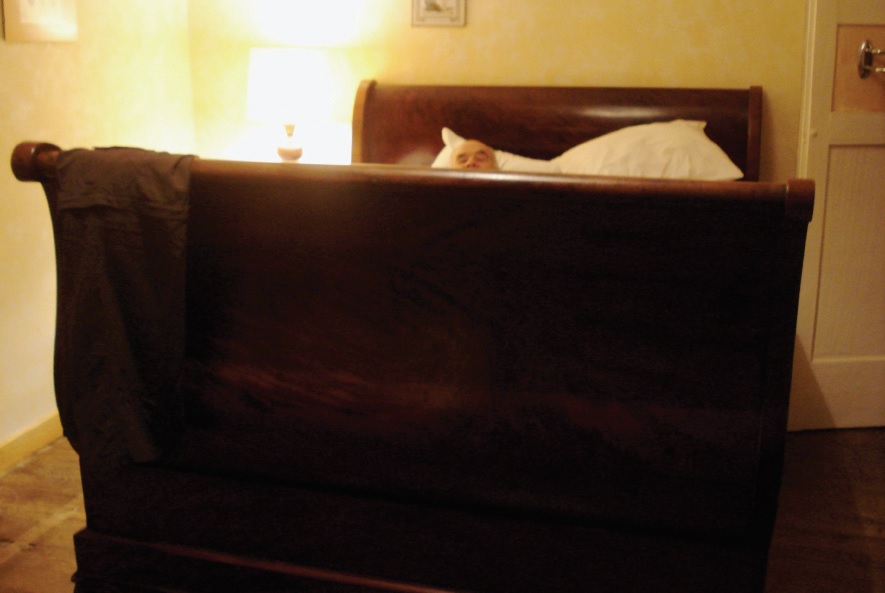
Violent storm
In 1999 a violent storm flattened nearly half of the standing forest at la Pouyade. Unexpected opportunities arose out of this traumatic event. Because the demand for wine barrel staves still exceeded supply. Roger found he was able to get quite good prices for downed white oaks that otherwise he would not have contemplated harvesting in his lifetime.
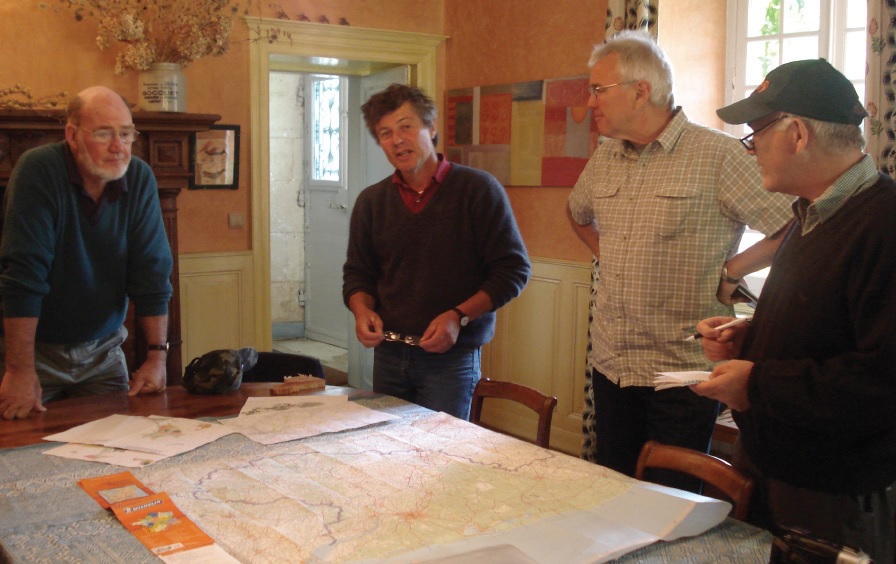
Generous government disaster-relief and replanting subsidies, of up to €5,000 a hectare, are enabling Roger and Christine to convert chestnut stands, which for some decades had been severely infected by blight, to faster growing stands of Douglas fir, Corsican pine, Atlas cedar and, most promising of all, loblolly pine. It makes one wonder whether loblolly pine has been properly provenance tested in New Zealand.
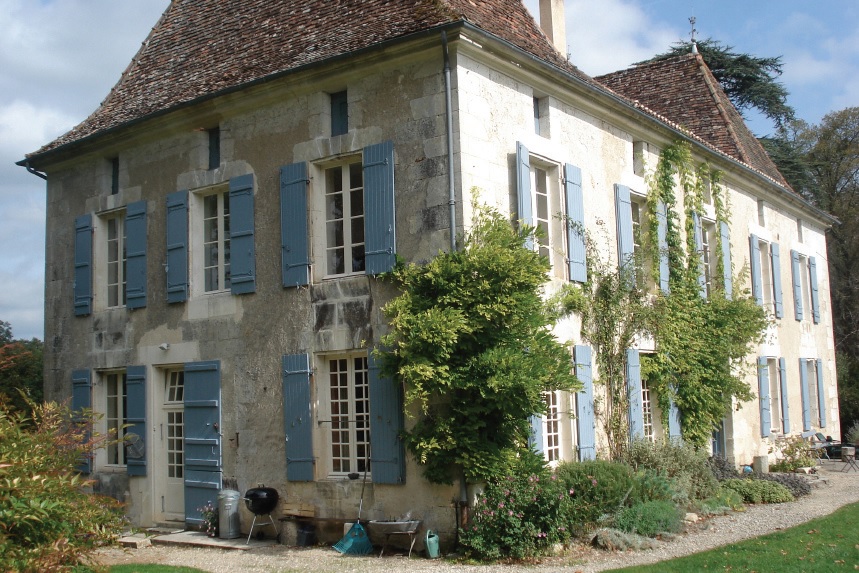
Roger has worked out that trees on his leached granite- sandy soils need fertilising. His application of 35 grams of super-phosphate per seedling has produced growth that has startled his forest-owning neighbors. The ever resourceful Roger has even managed to find a source of free fertiliser. He can have as many truck loads of composted sewage delivered from the nearby town as he wants.
Prehistoric forest damage?
Around 13,000 years ago some forest dwellers lay on their backs drawing pictures on the ceiling of the Rouffignac cave in the Dordogne. We found it eerily moving being in these caves looking at the same images. Two-thirds of the drawings depict woolly mammoths. At the time the drawings were made, forests were advancing as the ice sheets melted. Imagine thousands of these tusked, multi-tonne behemoths pushing your trees over, munching the foliage and belching methane. I fancy that our Palaeolithic relatives’ view of mammoths was not unlike our current view of possums, except they did not just think about eliminating them, they succeeded.
The Landes forest
The rest of our study tour focused on a magnificent 860,000 hectare maritime pine forest in the Landes region. Very compact, it is known as the Gascony triangle, one side running along the Atlantic coast and another paralleling the river Garonne.The annual harvest is about eight million cubic metres, being a quarter of France’s annual cut, or the equivalent of about 40 per cent of New Zealand’s total. It is the largest man-made forest in the world, and like Kaingaroa forest, it benefits from having major scale economies and flat topography.
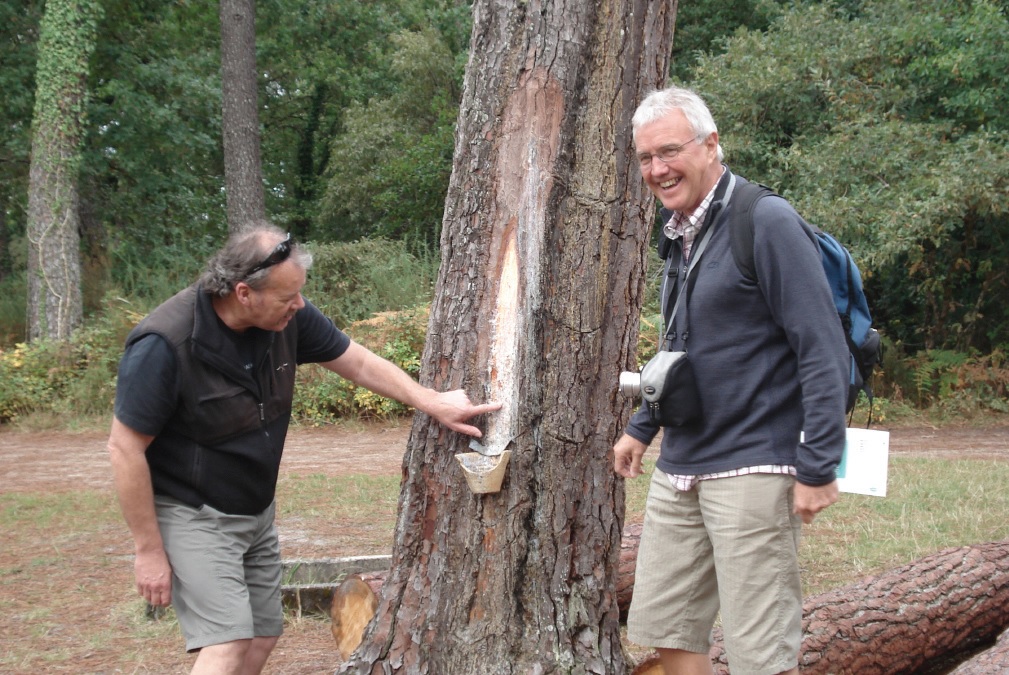
The forest was established mainly on rough grazing land in the 1800s. One reason for its formation was the high prices obtainable at the time for the resin which was obtained by tapping maritime pine. Another reason was the evolution of better machinery to drain and rip what was then mostly swamp underlain by a hard pan.
The need to stabilise sand dunes along the Atlantic coast was yet another incentive to plant trees. A Frenchman, Théodore Brémontier, who was financially encouraged by Napoleon, is credited with having devised the necessary re-vegetation and engineering techniques. This work was widely admired and, in a report to Parliament in 1887, New Zealand’s first conservator of forests, Campbell Inches-Walker, recommended that Brémontier’s techniques be used to contain sand dunes along the west coast of the North Island. Subsequently this led to the government planting about 50,000 hectares of coastal forest from Waitarere to Aupouri.
In the 1960s resin tapping ceased. By then pine resin and tars were being displaced as precursors for the production of solvents by more cheaply produced chemicals. Today maritime pine logs from the Landes forest provide the raw material for several profitable sawmills, pulp mills and paper mills.
France has much to teach us
Nine-tenths of the forests in Aquitaine are owned privately, nearly 300,000 people owning on average 5.3 hectares of forest each. In the Landes forest the mean holding of each owner is larger, being about 60 hectares. This contrasts markedly with New Zealand where corporate or public ownership dominates.
Another difference is the maturity of the private forest – owning sector in France. For example many families in the Landes area have been active in forestry for up to 10 generations. Management know-how is passed down from parents to children together with a healthy respect for the net benefits of co-operation.
These forest owners elect representatives who run, or have a significant say in the running, of the co-operative services. Most of the directors of these services are located in Bordeaux and the organisations are impressive. Our NZFFA has to become much more sophisticated and undergo major development before its services to members become anything like a match.The only organisations that remotely resemble these levels of co-operation in New Zealand are perhaps the Lake Taupo and Rotoaira Maori Forest Trusts.
Co-operative forestry organisations in Aquitaine
| Activities | Organisations |
|---|---|
| Forest Protection | (a) DFCI (Defence of forests against fire.) (b) Co-operative Insurance |
| Forest management | CAFSA (Agriculture and forestry coop of the South Atlantic region). Responsible for providing or assisting with general forestry work, management, and timber harvesting |
| Timber marketing | CAFSA (see above) or its new subsidiary, GPBS |
| Finance | SODEF (Society for the development of the forestry economy) This lends money for silviculture and forest management. |
| Forestry research | CPFA (Centre of productivity and action for forestry in the Aquitaine) and INRA (National Institute for agronomic research, including forestry) |
| Education | CPFA for technical forestry & FOGEFOR for forest management. |
| Information | Various journals and web sites |
| Trade shows for sylvi-culture & harvesting & etc | FOREXPO (GIE) The next trade show is due in 2010 |
| International co- ordination | USSE (union of silviculeurs in the south of Europe covering 10 million ha of forest). This is really an association of regional forestry co-ops from Spain, Portugal and Southern France. |
| Inter-professionalism | CIPM (Inter-professional committee on maritime pine). PEFC (Programme for the recognition of forestry certification) |
Fire control
Pierre Mace, the director of DFCI, Aquitaine’s fire control system, gave us a presentation about his organisation. The Landes forest is classed as high fire risk. Prior to the DFCI being set up about 40 years ago, there had been a series of disastrous forest fires, which included multiple fatalities. Since then the record has been admirable. Nearly 2,000 wildfires have been extinguished each year but the annual area of forest lost has been kept down to 0.12 per cent. DFCI is paid for on a one-to- two ratio by forest owners and relevant government agencies.
The DCFI sees itself as the protector of 34,000 forestry sector jobs and sales of €2.5 million a year. Among other things it ensures that 45,000 km of access tracks are kept open, 4,000 water points and 10,000 signs are maintained, and has developed automated meteorological and GIS systems to identify lightening strikes.
Although the marvelous wines of Bordeaux get more prominence in tourist brochures than forestry they contribute less to Aquitaine’s economy than trees. Appreciation of forestry is much more widespread and sympathetic in Aquitaine than in New Zealand. The much higher per capita involvement in forest investment would be one reason for this, but the sector’s pro-activity is another.
Optimising profit from forestry
Thanks to genetic improvement and better management, maritime pine rotations have dropped from 80 to 35 years. Although straightness has improved as well, the average maritime pine currently being harvested in the Landes is still of much poorer form than the average New Zealand radiata pine. This may have been a factor in encouraging innovation in the French wood processing industry.
CIRIS Engineering, a transformation process engineering company entirely dedicated to the solid wood industry and specialising in creative technical solutions, is a classic example. Sitting behind computers at Pessac, Bordeaux, when they are not visiting mills around the world, 38 staff, most of who number engineering and information science degrees among their qualifications, develop their tailor-made mill optimisation systems.
Yannick Gaultier showed us the results of one of CIRIS’s custom designed projects at a mill at Escorce, near Mimizan, owned by Gasgogne Wood and managed by René Claude. Generally these projects involve a mixture of true log shape scanning, faster log sorting, high-speed and often automated optimal sawing, faster board sorting, faster stacking and speedier re- manufacturing. Co-objectives include the reduction of energy, labour and maintenance costs.
CIRIS has an impressive list of satisfied international customers including Rick Osbourne, a NZFFA member. Gaultier claimed that the best result CIRIS had achieved was an increase of 24 per cent in annual revenue for one client.
Innovative marketing
PF Bois is a saw mill and re-manufacturing plant at Mimizan. Eric Plantier, the third generation owner, specialises in the finishing of maritime pine panelling. His planks and mouldings are variously planed, pressed, embossed and stained, creating an amazingly beautiful array of colours, textures and patterns. These are then used to create magnificent feature walls, ceilings and floors for new fit-outs in some of the most prestigious, as well as the more humble, buildings of the capital cities of Europe.
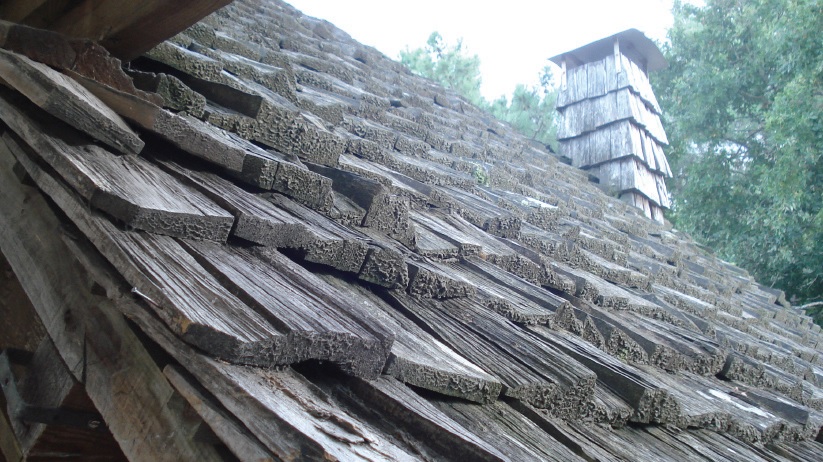
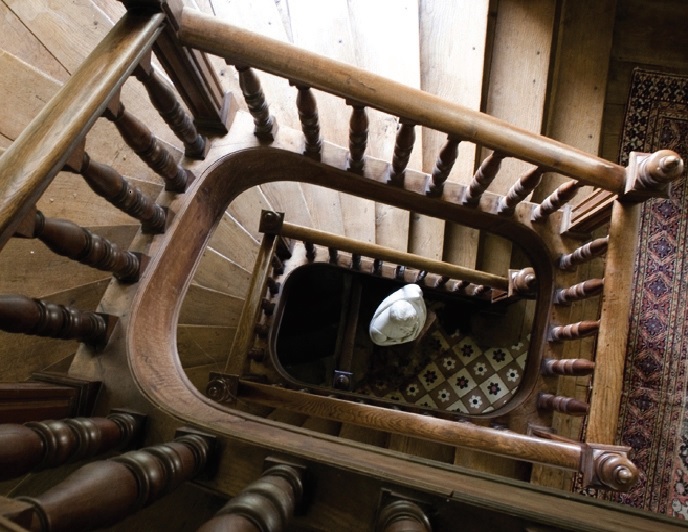
Every six months, based on styling advice purchased from fashion designers in Paris, Eric changes his offerings which take the form of special sample packs that he regularly sends to architects and builders. It is difficult to imagine any of New Zealand’s current complement of largely aged sawmillers identifying with such endeavours, even though their basic output, radiata pine timber, is an almost identical material.
Useful links have been made with several forest industry leaders in France and they will be further reinforced. A particularly friendly contact, Christian Pinaudeau, the director of the forest owners’ association for southern Europe, was adamant that he would lead a tour of French foresters to New Zealand in 2011. The side attraction is the Rugby World Cup. We look forward to helping him organise the visit.
On 28 January 2009, four months after our study trip, Aquitaine was struck by a storm, toppling 50 million cubic metres, more than half the pine trees in the Landes Forest. The devastation has been as bad as in 1999. Being geographically so similar, New Zealand forestry is probably just as vulnerable to storms of greater frequency and increasing severity, so do not let your rotations get too long and keep your fingers crossed.

 Farm Forestry New Zealand
Farm Forestry New Zealand